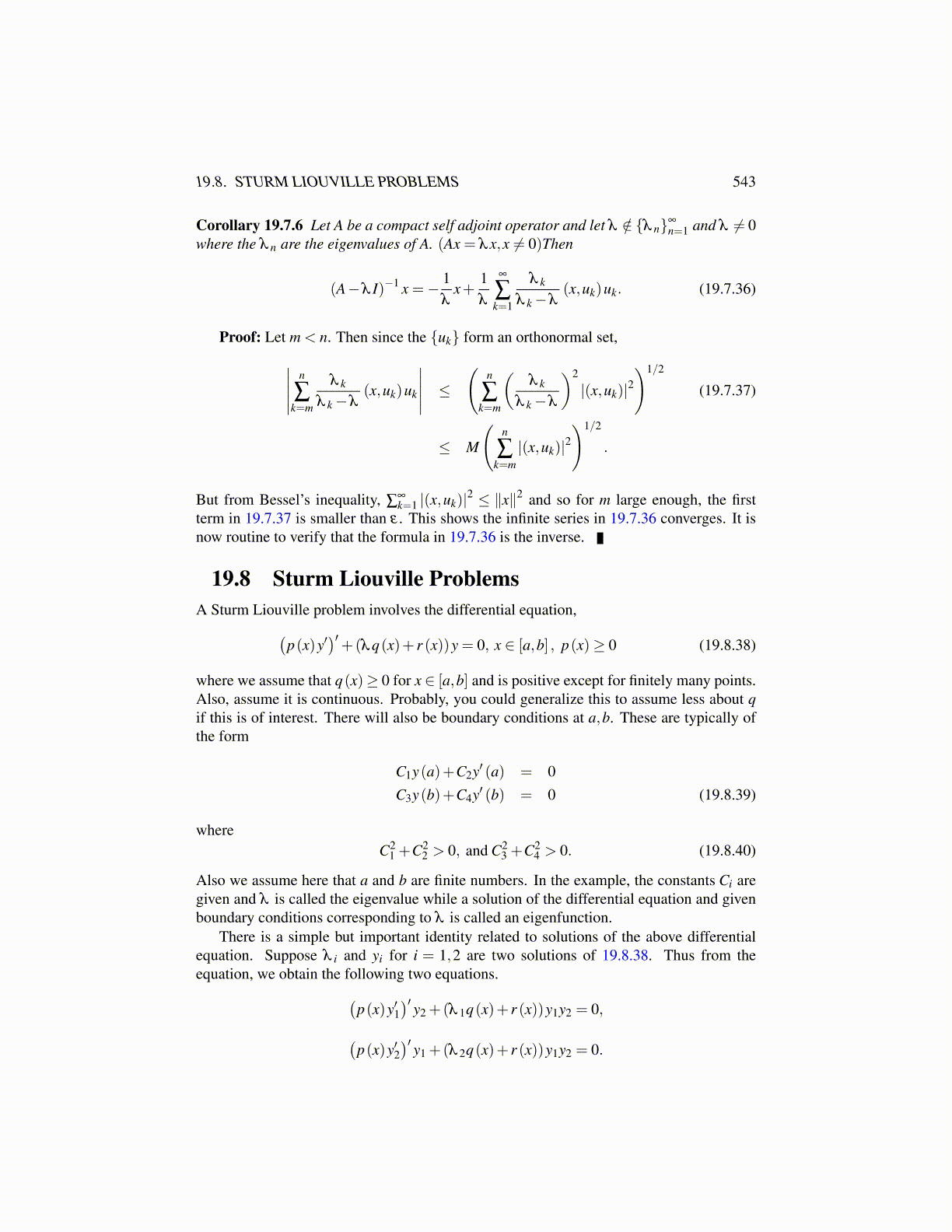
19.8. STURM LIOUVILLE PROBLEMS 543
Corollary 19.7.6 Let A be a compact self adjoint operator and let λ /∈ {λ n}∞
n=1 and λ ̸= 0where the λ n are the eigenvalues of A. (Ax = λx,x ̸= 0)Then
(A−λ I)−1 x =− 1λ
x+1λ
∞
∑k=1
λ k
λ k−λ(x,uk)uk. (19.7.36)
Proof: Let m < n. Then since the {uk} form an orthonormal set,∣∣∣∣∣ n
∑k=m
λ k
λ k−λ(x,uk)uk
∣∣∣∣∣ ≤(
n
∑k=m
(λ k
λ k−λ
)2
|(x,uk)|2)1/2
(19.7.37)
≤ M
(n
∑k=m|(x,uk)|2
)1/2
.
But from Bessel’s inequality, ∑∞k=1 |(x,uk)|2 ≤ ∥x∥2 and so for m large enough, the first
term in 19.7.37 is smaller than ε . This shows the infinite series in 19.7.36 converges. It isnow routine to verify that the formula in 19.7.36 is the inverse.
19.8 Sturm Liouville ProblemsA Sturm Liouville problem involves the differential equation,(
p(x)y′)′+(λq(x)+ r (x))y = 0, x ∈ [a,b] , p(x)≥ 0 (19.8.38)
where we assume that q(x)≥ 0 for x ∈ [a,b] and is positive except for finitely many points.Also, assume it is continuous. Probably, you could generalize this to assume less about qif this is of interest. There will also be boundary conditions at a,b. These are typically ofthe form
C1y(a)+C2y′ (a) = 0C3y(b)+C4y′ (b) = 0 (19.8.39)
whereC2
1 +C22 > 0, and C2
3 +C24 > 0. (19.8.40)
Also we assume here that a and b are finite numbers. In the example, the constants Ci aregiven and λ is called the eigenvalue while a solution of the differential equation and givenboundary conditions corresponding to λ is called an eigenfunction.
There is a simple but important identity related to solutions of the above differentialequation. Suppose λ i and yi for i = 1,2 are two solutions of 19.8.38. Thus from theequation, we obtain the following two equations.(
p(x)y′1)′ y2 +(λ 1q(x)+ r (x))y1y2 = 0,(
p(x)y′2)′ y1 +(λ 2q(x)+ r (x))y1y2 = 0.